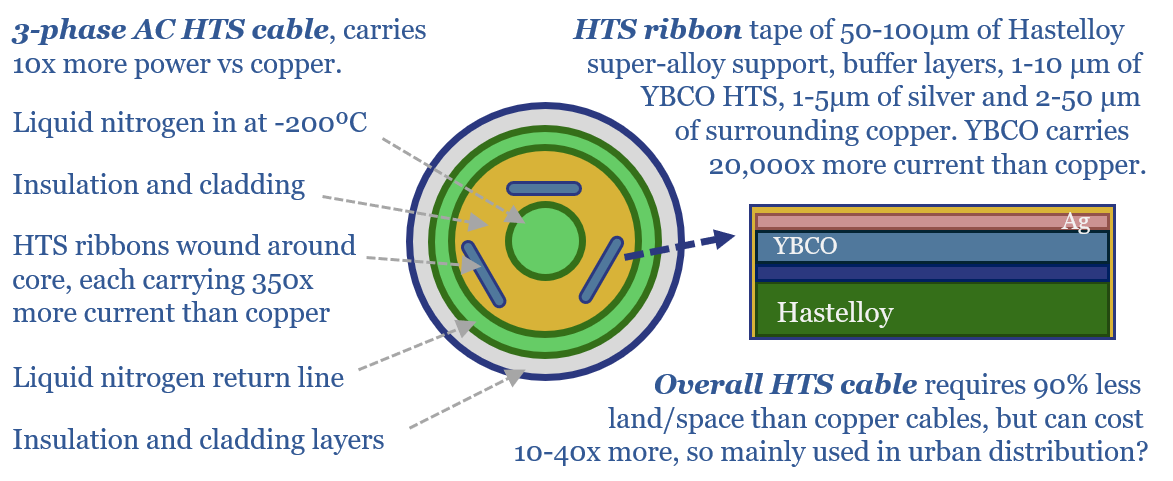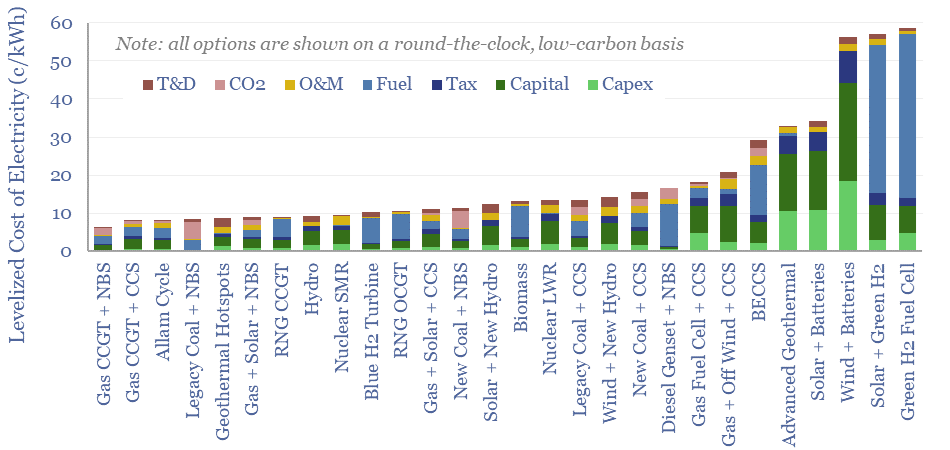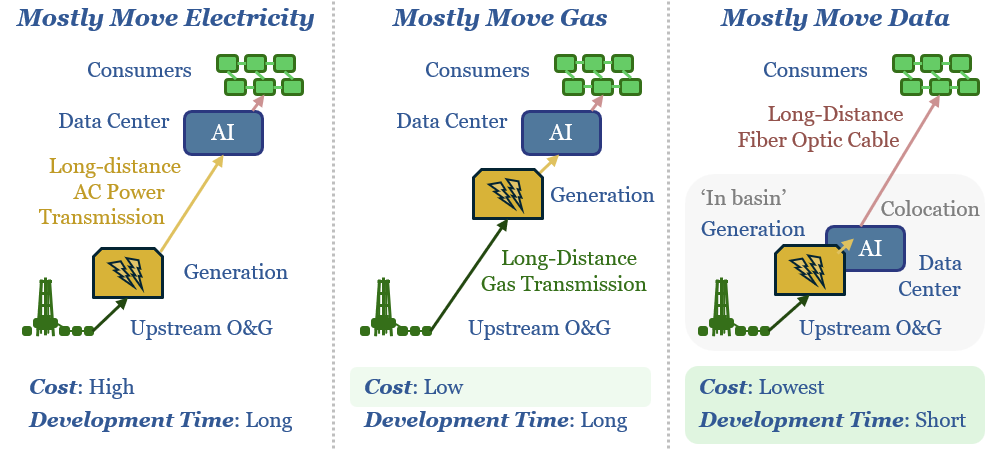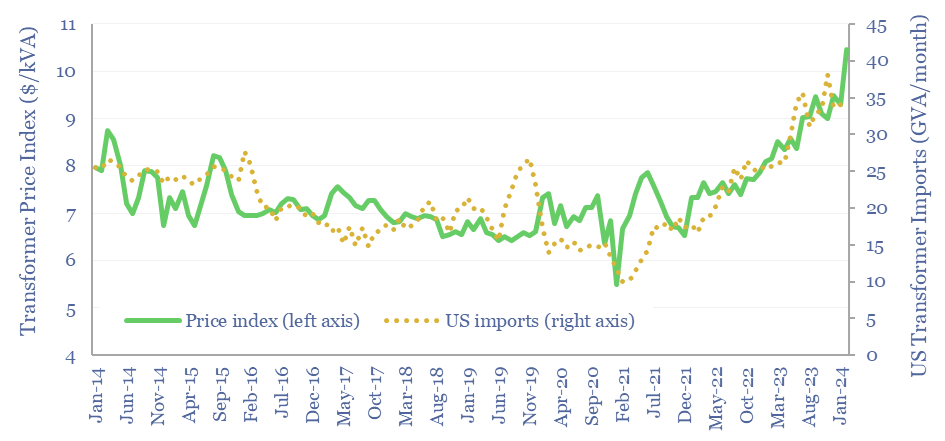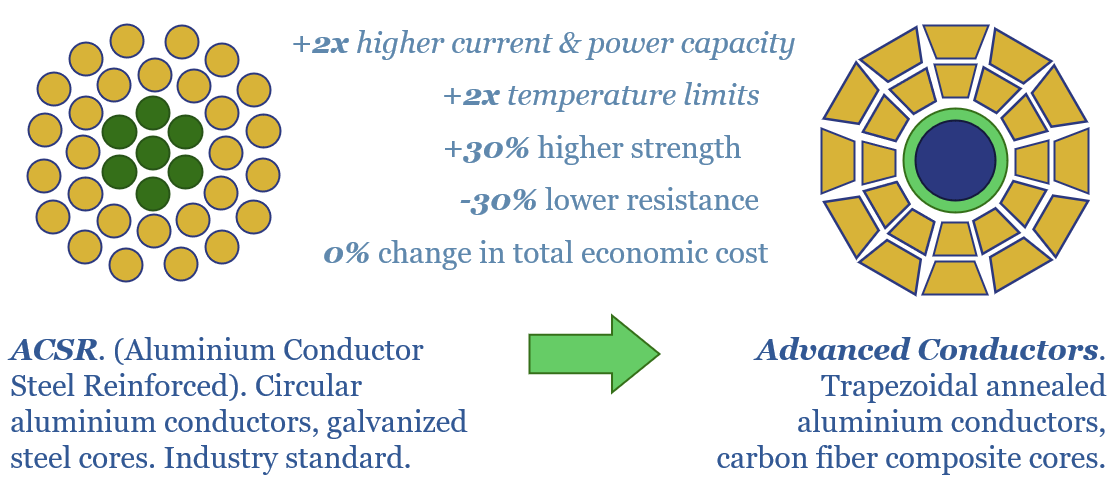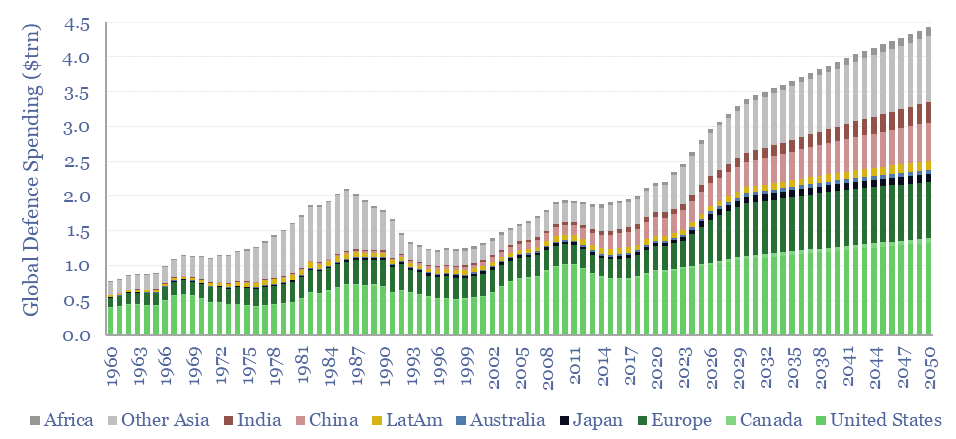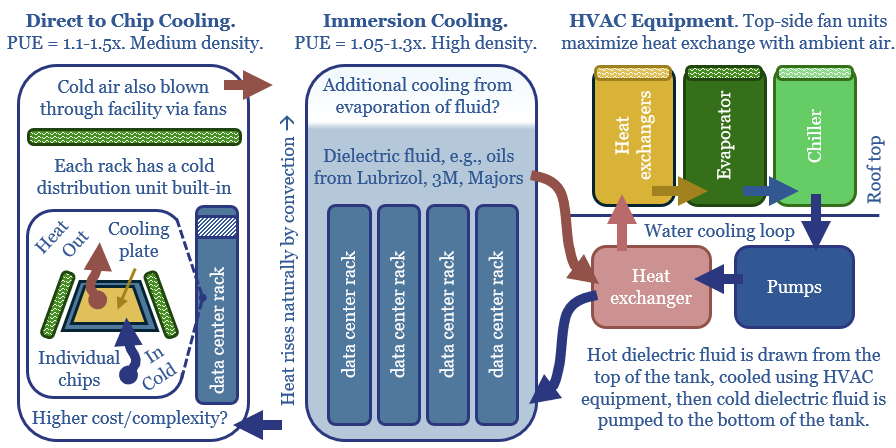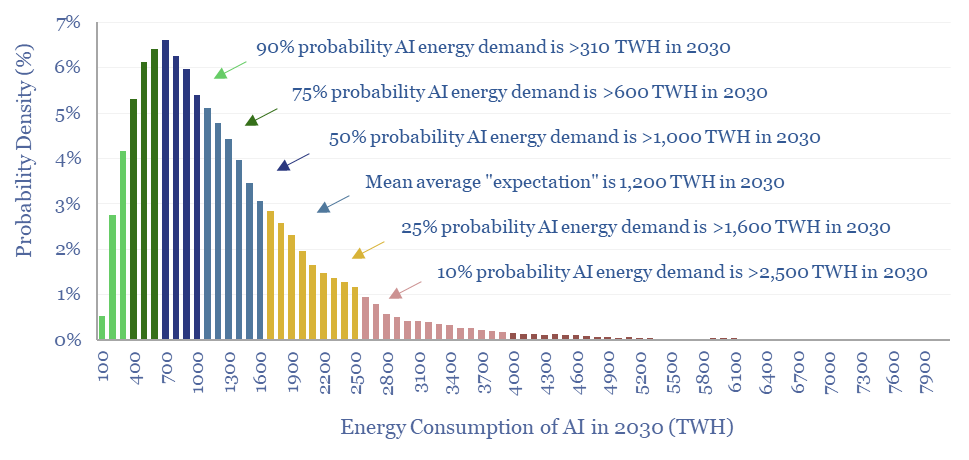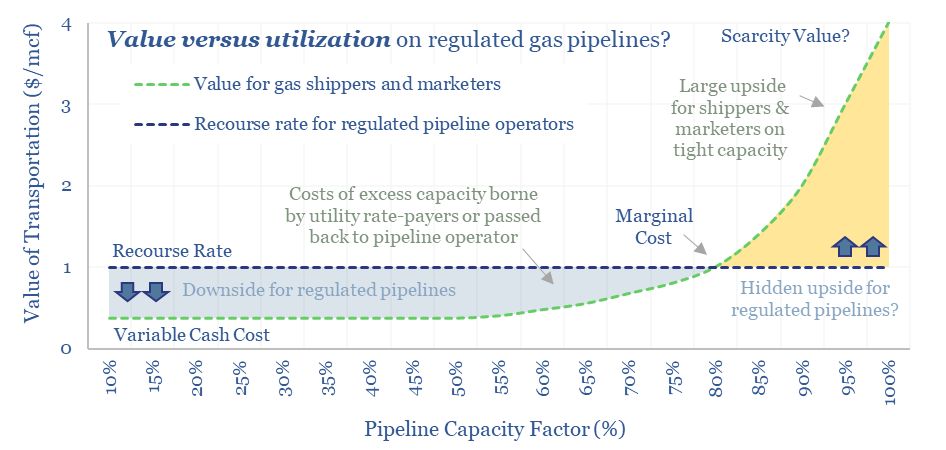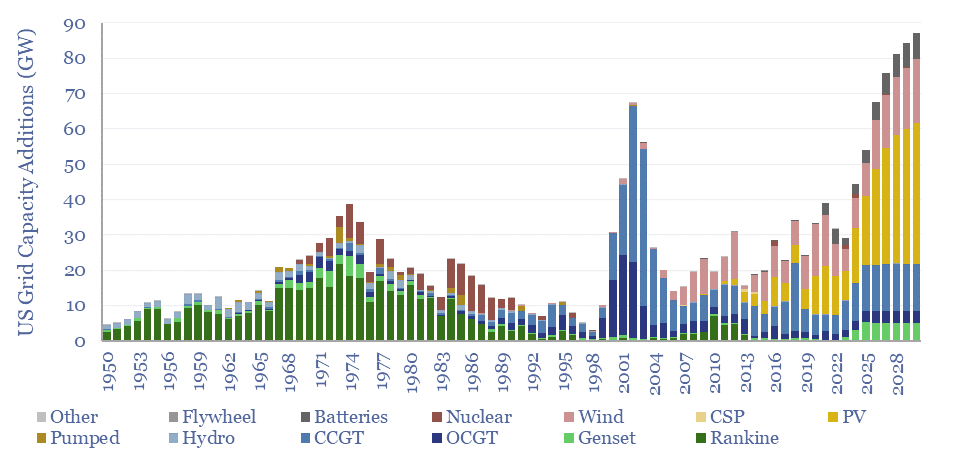-
Superconductors: distribution class?
High temperature superconductors (HTSs) carry 20,000x more current than copper, with almost no electrical resistance. They must be cooled to -200ºC. So costs have been moderately high at 35 past projects. Yet this 16-page report explores whether HTS cables will now accelerate to defray power grid bottlenecks? And who benefits within the supply chain?
-
Low-carbon baseload: walking through fire?
This 16-page report appraises 30 different options for low-carbon, round-the-clock power generation. Their costs range from 6-60 c/kWh. We also consider true CO2 intensity, time-to-market, land use, scalability and power quality. Seven insights follow for powering new grid loads, especially AI data centers.
-
Moving targets: molecules, electrons or data ?!
New AI data-centers are facing bottlenecked power grids. Hence this 15-page note compares the costs of constructing new power lines, gas pipelines or fiber optic links for GW-scale computing. The latter is best. Latency is a non-issue. This work suggests the best locations for AI data-centers and impacts US shale, midstream and fiber-optics?
-
Transformer shortages: at their core?
Transformers are needed every time voltage steps up or down in the power grid. But lead times have now risen from 12-24 weeks to 1-3 years. And prices have risen 70%. Will these shortages structurally slow new energies and AI? Or improve transformer margins? Or is it just another boom-bust cycle? Answers are in this…
-
Advanced Conductors: current affairs?
Reconductoring today’s 7M circuit kilometers of transmission lines may help relieve power grid bottlenecks, while avoiding the 10-year ordeal of permitting new lines? Raising voltage may have hidden challenges. But Advanced Conductors stand out in this 18-page report. And the theme could double carbon fiber demand?
-
Arms race: defence versus decarbonization?
Does defence displace decarbonization as the developed world’s #1 policy goal through 2030, re-allocating $1trn pa of funds? Perhaps, but this 10-page note also finds a surprisingly large overlap between the two themes. European capital goods re-accelerate most? Some clean-tech does risk deprioritization?
-
Cool customers: AI data-centers and industrial HVAC?
Chips must usually be kept below 27ºC, hence 10-20% of both the capex and energy consumption of a typical data-center is cooling, as explored in this 14-page report. How much does climate matter? What changes lie ahead? And which companies sell into this soon-to-double market for cooling equipment?
-
Energy intensity of AI: chomping at the bit?
Rising energy demands of AI are now the biggest uncertainty in all of global energy. To understand why, this 17-page note explains AI computing from first principles, across transistors, DRAM, GPUs and deep learning. GPU efficiency will inevitably increase, but compute increases faster. AI most likely uses 300-2,500 TWH in 2030, with a base case…
-
Midstream gas: pipelines have pricing power ?!
FERC regulations are surprisingly interesting!! In theory, gas pipelines are not allowed to have market power. But increasingly, they do have it: gas use is rising, on grid bottlenecks, volatile renewables and AI; while new pipeline investments are being hindered. So who benefits here? Answers are explored in this report.
-
Energy and AI: the power and the glory?
The power demands of AI will contribute to the largest growth of new generation capacity in history. This 18-page note evaluates the power implications of AI data-centers. Reliability is crucial. Gas demand grows. Annual sales of CCGTs and back-up gensets in the US both rise by 2.5x? This is our most detailed AI report to…
Content by Category
- Batteries (89)
- Biofuels (44)
- Carbon Intensity (49)
- CCS (63)
- CO2 Removals (9)
- Coal (38)
- Company Diligence (94)
- Data Models (838)
- Decarbonization (160)
- Demand (110)
- Digital (59)
- Downstream (44)
- Economic Model (204)
- Energy Efficiency (75)
- Hydrogen (63)
- Industry Data (279)
- LNG (48)
- Materials (82)
- Metals (80)
- Midstream (43)
- Natural Gas (148)
- Nature (76)
- Nuclear (23)
- Oil (164)
- Patents (38)
- Plastics (44)
- Power Grids (130)
- Renewables (149)
- Screen (117)
- Semiconductors (32)
- Shale (51)
- Solar (68)
- Supply-Demand (45)
- Vehicles (90)
- Wind (44)
- Written Research (354)
